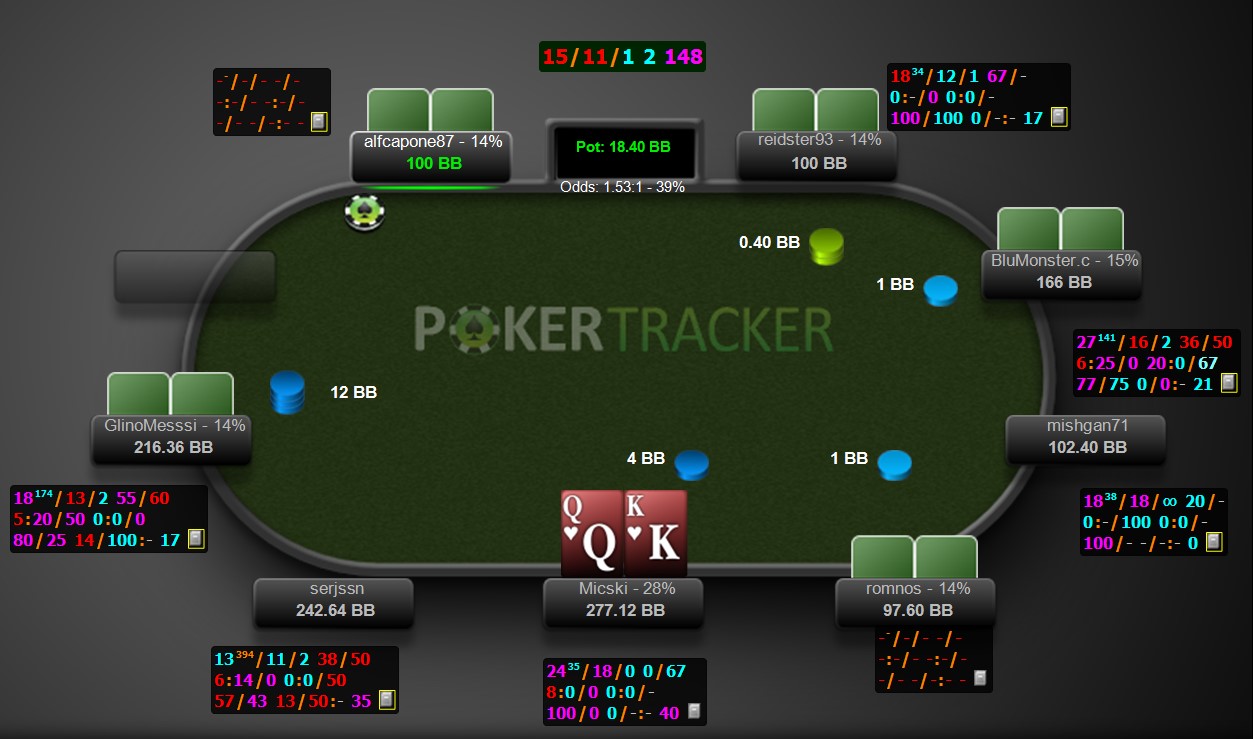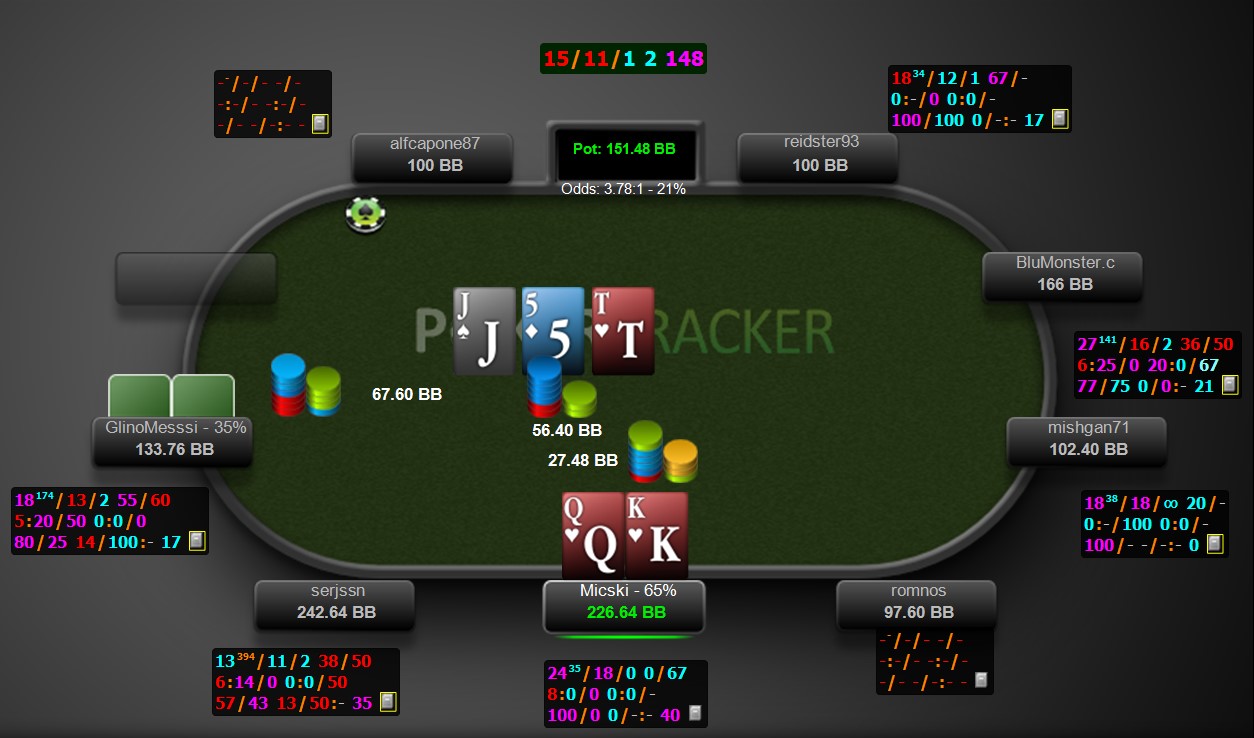I played a big 4bet pot with KQ vs TT, both players deep, which I wanted to review, because I probably made some mistakes.
Preflop.

The first issue, I have with this hand, is, that I was not aware, that I had a deep stacked TAG behind me. I prefer to avoid this, because it is not that profitable. Without reason, I should leave such a table, when better tables are available.
The range for this kind of TAG in this spot is 99+, AQs+, A5s-A2s, AQo+. I have 35% vs. that range. Folding is an option, but feels a bit too tight in this spot. Calling is also an option, because we are deep. However, a 4bet will have quite a bit of fold equity at around 40% and, when called by 99-QQ, AK, still have 34%.
Flop.

We see this dicey flop, where I have 33% vs. his range.
The next issue with this hand is, that I should consider checking here and then consider pot controlling. The reason is, that this flop does hit his range hard and that he is capable of raising me here, which would be bad for my odds to the nuts. I will also have implied odds here, because he will not always expect me to have KQ here.
However, I went for the continuation bet. When he raises 2,5 times my bet, in such a big pot, he has 6 sets with JJ and TT. The reason is, that his calling range is QQ, AK and his folding range is 99. Deep stacked players from Ukraine is not capable of bluff raising AK here. So, I have 27% in this spot. Folding is an option, but with a straight draw and backdoor flush draw, I actually have direct pot odds for a call here. There are also implied odds, because he is just never folding a set here. Raising is probably a bad play here, because it would mean to get it in with 27%, while there is no fold equity. It just helps him play correct and getting full value.
Conclusion.
- If there is a TAG behind, and you are both deep stacked, then consider leaving, if other tables are available. It is not that profitable and it presents a higher risk of loss and tilt.
- If the flop and the spot itself is in favor of your opponent, and he is capable of raising your bets, while in a big hand, then consider checking for pot control. You can still take control later or consider a bluff later.
- If you played your hand aggressively, which narrowed down his range, and your opponent clearly has a lock on such a hand, then play within your pot odds and force him to play correct. If he fails to do that, you have will be able to make a correct lay-down.
